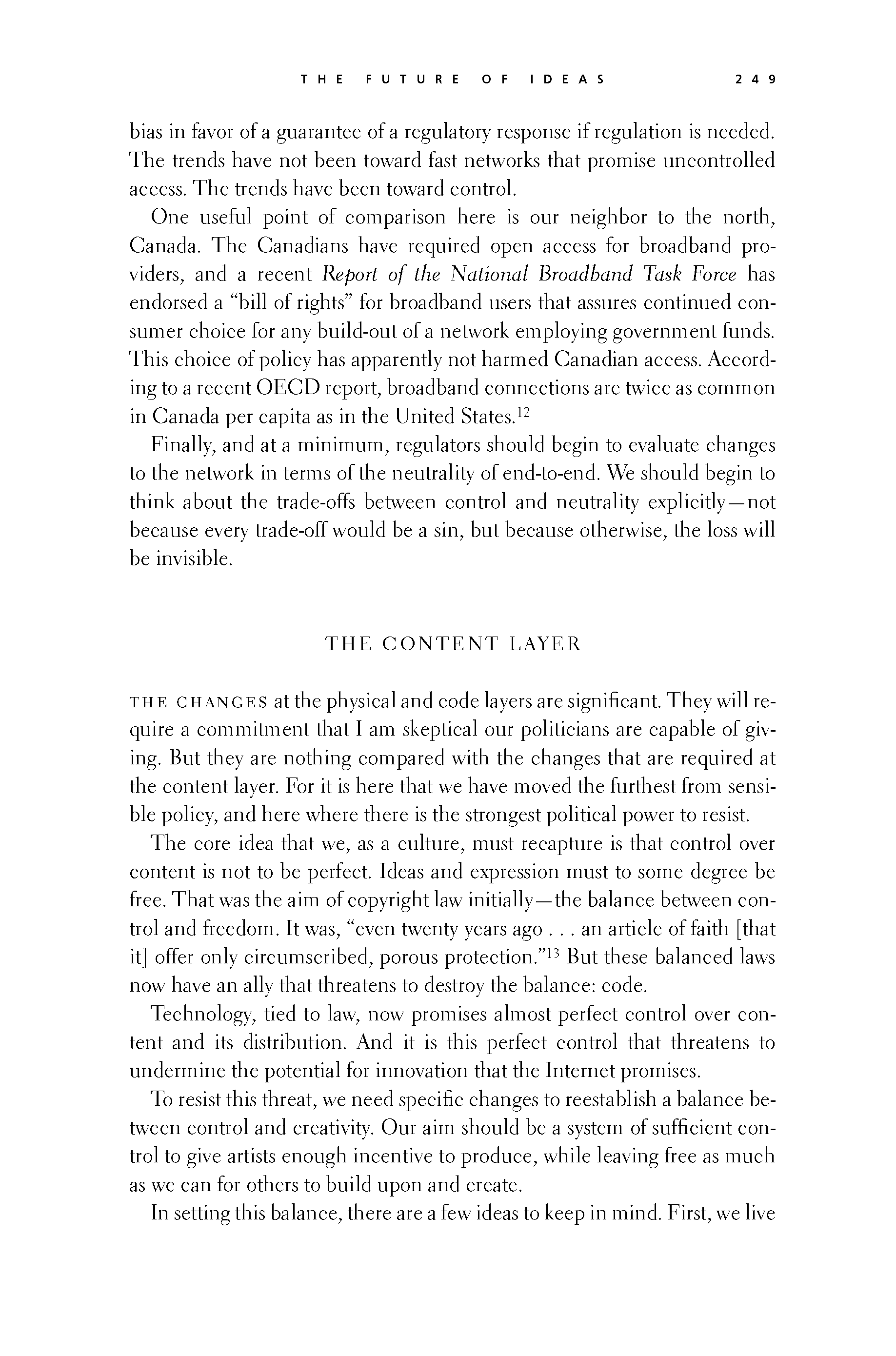 p248 _
-chap- _
toc-1 _
p249w _
toc-2 _
+chap+ _
p250
p248 _
-chap- _
toc-1 _
p249w _
toc-2 _
+chap+ _
p250
bias in favor of a guarantee of a regulatory response if regulation is needed.
The trends have not been toward fast networks that promise uncontrolled
access. The trends have been toward control.
One useful point of comparison here is our neighbor to the north,
Canada. The Canadians have required open access for broadband pro-
viders, and a recent _Report_of_the_National_Broadband_Task_Force_ has
endorsed a "bill of rights" for broadband users that assures continued con-
sumer choice for any build-out of a network employing government funds.
This choice of policy has apparently not harmed Canadian access. Accord-
ing to a recent OECD report, broadband connections are twice as common
in Canada per capita as in the United States.[14-12]
Finally, and at a minimum, regulators should begin to evaluate changes
to the network in terms of the neutrality of end-to-end. We should begin to
think about the trade-offs between control and neutrality explicitly -- not
because every trade-off would be a sin, but because otherwise, the loss will
be invisible.
/tab\/tab\THE CONTENT LAYER/tab\/tab\
The changes at the physical and code layers are significant. They will re-
quire a commitment that I am skeptical our politicians are capable of giv-
ing. But they are nothing compared with the changes that are required at
the content layer. For it is here that we have moved the furthest from sensi-
ble policy, and here where there is the strongest political power to resist.
The core idea that we, as a culture, must recapture is that control over
content is not to be perfect. Ideas and expression must to some degree be
free. That was the aim of copyright law initially -- the balance between con-
trol and freedom. It was, "even twenty years ago... an article of faith [that
it] offer only circumscribed, porous protection."[14-13] But these balanced laws
now have an ally that threatens to destroy the balance: code.
Technology, tied to law, now promises almost perfect control over con-
tent and its distribution. And it is this perfect control that threatens to
undermine the potential for innovation that the Internet promises.
To resist this threat, we need specific changes to reestablish a balance be-
tween control and creativity. Our aim should be a system of sufficient con-
trol to give artists enough incentive to produce, while leaving free as much
as we can for others to build upon and create.
In setting this balance, there are a few ideas to keep in mind. First, we live
[[249]]
p248 _
-chap- _
toc-1 _
p249w _
toc-2 _
+chap+ _
p250